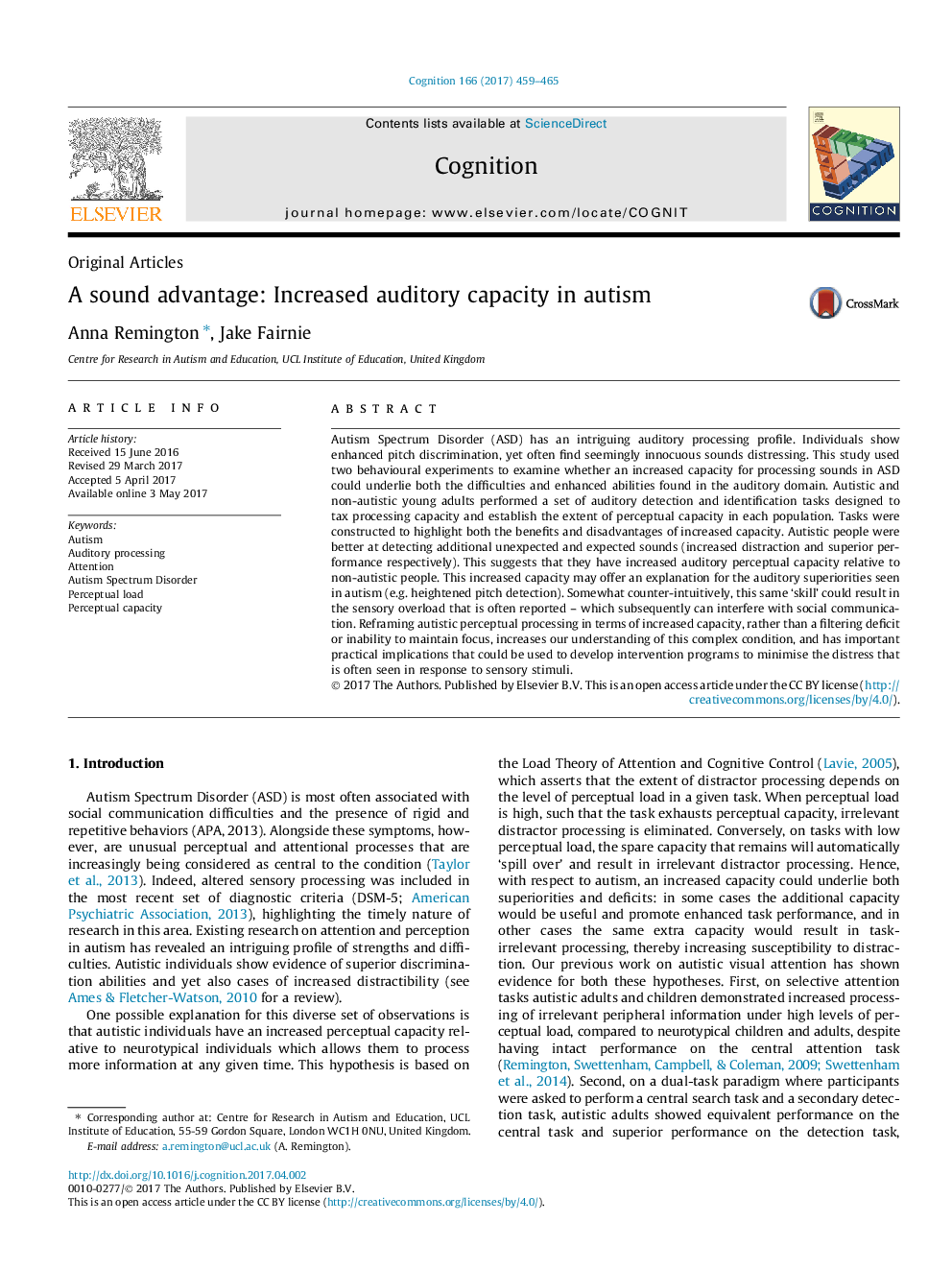| Article ID | Journal | Published Year | Pages | File Type |
|---|---|---|---|---|
| 5041571 | Cognition | 2017 | 7 Pages |
â¢Autistic individuals have an increased auditory perceptual capacity.â¢This higher capacity led to enhanced task performance on a selective attention task.â¢The same capacity led to increased distraction on an inattentional deafness task.â¢This offers an explanation for abilities and difficulties seen in autistic perception.â¢Reframing autistic attention in this manner suggests novel intervention approaches.
Autism Spectrum Disorder (ASD) has an intriguing auditory processing profile. Individuals show enhanced pitch discrimination, yet often find seemingly innocuous sounds distressing. This study used two behavioural experiments to examine whether an increased capacity for processing sounds in ASD could underlie both the difficulties and enhanced abilities found in the auditory domain. Autistic and non-autistic young adults performed a set of auditory detection and identification tasks designed to tax processing capacity and establish the extent of perceptual capacity in each population. Tasks were constructed to highlight both the benefits and disadvantages of increased capacity. Autistic people were better at detecting additional unexpected and expected sounds (increased distraction and superior performance respectively). This suggests that they have increased auditory perceptual capacity relative to non-autistic people. This increased capacity may offer an explanation for the auditory superiorities seen in autism (e.g. heightened pitch detection). Somewhat counter-intuitively, this same 'skill' could result in the sensory overload that is often reported - which subsequently can interfere with social communication. Reframing autistic perceptual processing in terms of increased capacity, rather than a filtering deficit or inability to maintain focus, increases our understanding of this complex condition, and has important practical implications that could be used to develop intervention programs to minimise the distress that is often seen in response to sensory stimuli.
